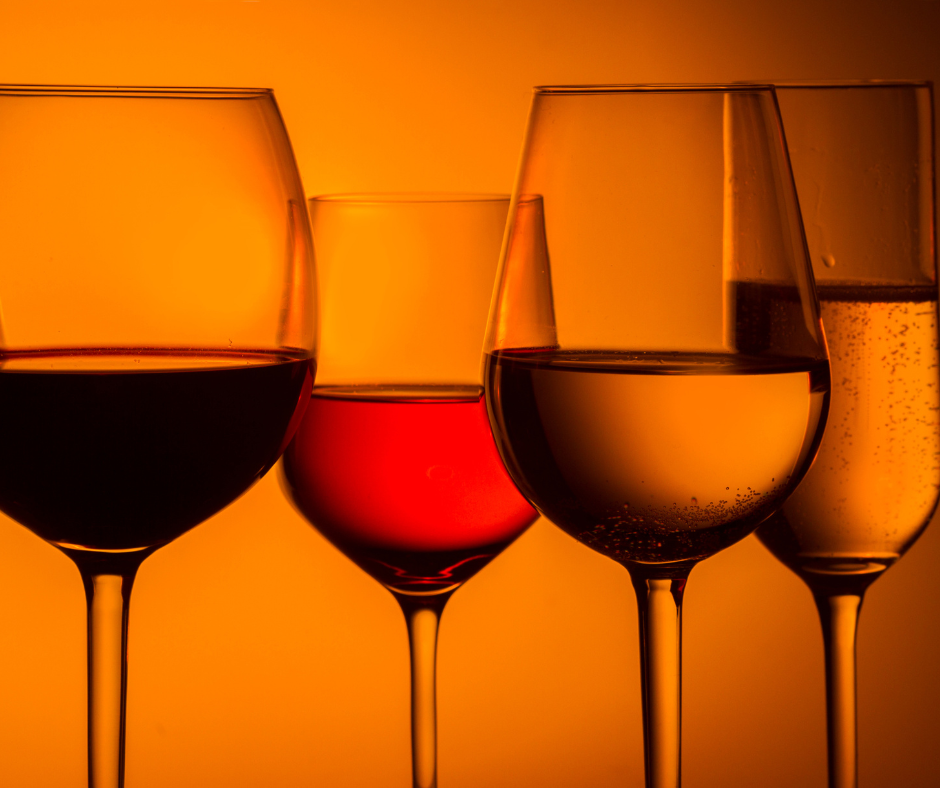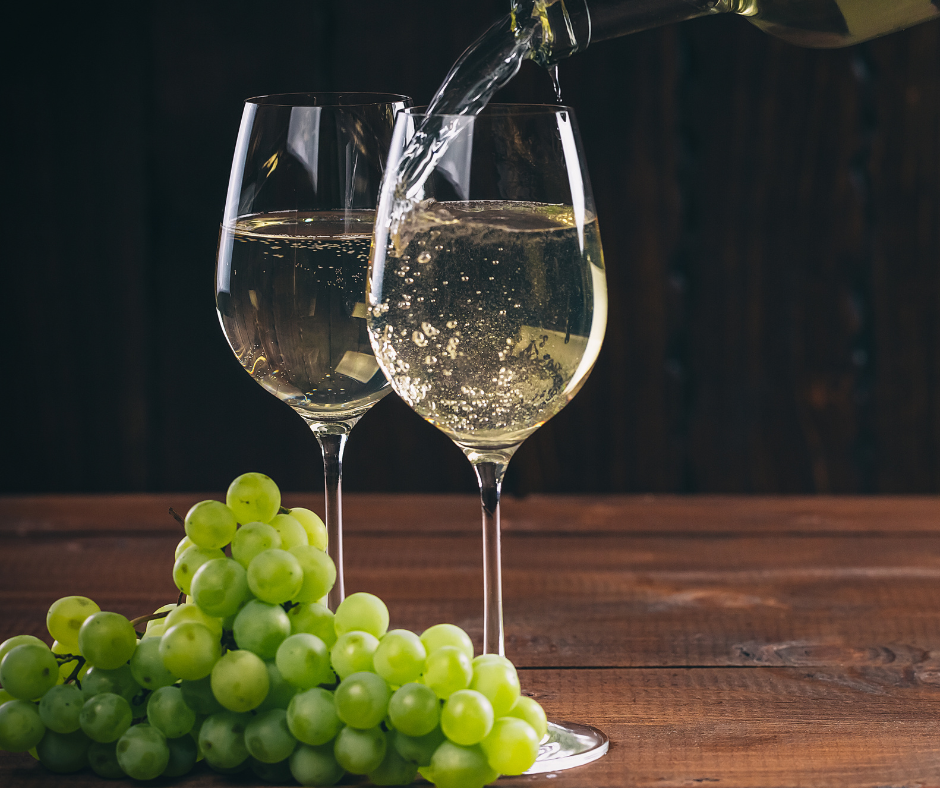Introduction
Wine glasses come in various shapes and sizes, not just for aesthetic purposes. Wine enthusiasts know that the shape of the glass can affect the wine’s aroma, taste, and overall drinking experience. This article will delve into the differences when comparing White Wine Glasses and Red Wine Glasses.
Why Does The Shape Of Wine Glass Matter?
Understanding why the shape of the wine glass matters is essential in getting the most out of your wine-drinking experience. The glass’s shape affects how the wine interacts with the air, moves around in the glass, and hits the various taste receptors on your tongue. The design of the glass can also impact the wine’s temperature, affecting how the flavors develop.
White Wine Glass vs Red Wine Glass
Red wine glasses tend to be taller and have a larger bowl than white wine glasses. This design allows the wine to breathe deeper, enabling more aromas to emerge. The larger bowl also provides more surface area for the wine to come into contact with air, which can soften tannins and mellow out bold flavors.
White wine glasses, on the other hand, have a smaller bowl and are generally narrower than red wine glasses. White wines are more delicate and don’t need as much space to breathe. The narrower bowl helps preserve the wine’s cooler temperature by reducing the air that comes into contact with the wine.
In general, red wine glasses are designed to enhance bolder, more aromatic wines, while white wine glasses focus on preserving the wine’s more delicate qualities.
The shape of wine glasses can significantly impact your overall drinking experience. Choose the right glass for your wine to bring out its full potential!

Understanding Red Wine Glasses
Wine glasses come in different shapes and sizes, each designed for a specific type of wine. The shape of the glass can affect the wine’s aroma, taste, and overall drinking experience. One of the biggest differences between red and white wine glasses is their shape and size.
Red Wine Glass Shape And Size
Red wine glasses are taller than white wine glasses and have a larger bowl. This design enables the wine to breathe deeper, allowing more aromas and flavors to emerge. The larger bowl also provides more surface area for the wine to come into contact with air, which can soften tannins and enhance the wine’s overall flavor profile.
Benefits Of Using A Red Wine Glass
Using a red wine glass has many benefits, including:
- Enhancing the wine’s aroma and flavor
- Allowing the wine to breathe and develop its full potential
- Softening tannins and mellowing out bold flavors
- Providing a more immersive and enjoyable drinking experience
In general, red wine glasses are designed to enhance bolder, more aromatic wines, while white wine glasses focus on preserving the wine’s more delicate qualities. The shape of the glass can significantly impact your overall drinking experience. Therefore, choosing the right glass for your wine is essential to bring out its full potential.
Understanding White Wine Glasses
White wine glasses have smaller bowls than red wine glasses, perfect for more subtly aromatic white wines. A smaller bowl enables the drinker to bring the wine closer to their nose, making it easier to appreciate its delicate aroma. The design of white wine glasses places a greater emphasis on preserving the wine’s more delicate qualities.
White Wine Glass Shape And Size
White wine glasses have shorter bowls compared to red wine glasses. This shape allows the drinker to appreciate the wine’s aroma even more when the wine is swirled. Swirling the wine in the glass creates a more visible surface area, which makes it easier to see the viscosity and color of the wine.
Benefits Of Using A White Wine Glass
Using the right glass for your white wine can enhance your overall drinking experience. Some benefits of using a white wine glass are:
- Preserving the wine’s delicate qualities
- Allowing you to appreciate the wine’s aroma
- Providing a more immersive and enjoyable drinking experience
In summary, the shape and size of a wine glass can affect the way you experience the wine. The bowl’s shape determines how much air comes into contact with the wine, affecting the wine’s aroma and flavor. Whether you are drinking red or white wine, it’s essential to choose the right glass to bring out the best qualities of the wine.

The Impact Of Glass Shape On Wine
Wine enthusiasts understand the importance of glass shape when enjoying an optimal drinking experience. The shape, particularly the shape of the bowl, can significantly impact the taste, aroma, and overall enjoyment of the wine.
How The Shape Of A Glass Can Affect The Taste And Aroma Of Wine
The shape of a wine glass affects how much air comes into contact with the wine. This contact contributes to the wine’s aroma and flavor. Red wine glasses are usually taller and have a larger bowl than white wine glasses. This design is perfect for bigger, bolder red wines that require more space for the aromas and flavors to emerge. In contrast, white wine glasses have smaller bowls that allow the drinker to appreciate the wine’s delicate aroma.
When the wine is swirled in the glass, the vessel’s shape affects how the wine moves around, exposing it to more air and vaporizing some of the volatile elements, contributing to the aromas. In this way, the shape of a wine glass can enhance or detract from the overall drinking experience.
Why Specific Glasses Are Recommended For Certain Wine Types
Different glasses are recommended for different wine types because they enhance each wine’s unique qualities. Red wines have more tannin, acid, and alcohol content than white wines. Therefore, red wine glasses have a larger bowl, allowing for more surface area and evaporation, which enhances the wine’s aroma and flavor. In comparison, white wine glasses have smaller bowls, minimizing air exposure and preserving the wine’s delicate qualities.
In summary, selecting the right glass shape can enhance or detract from the drinking experience. The design can affect aroma, taste, and overall enjoyment. When choosing glasses, it is essential to consider the wine’s unique characteristics to enhance your drinking experience. Choosing the right glass can make all the difference in appreciating your favorite wines.
Types Of Red Wine Glasses
There are three main types of red wine glasses: Bordeaux, Burgundy, and a smaller standard red wine glass. These glasses are designed to bring out the unique qualities that make each wine type a special experience.
Bordeaux Glass
The Bordeaux glass is tall with a broad bowl, allowing more contact with the air, which enhances the aroma of the wine. This glass’s shape also directs the wine towards the back of the mouth, where the taste buds can better detect the wine’s tannins.
Burgundy Glass
The Burgundy glass has a broader bowl than the Bordeaux, which allows more space for the wine’s aromas to gather. This shape directs the wine toward the tip of the tongue, where the sweeter taste buds are located.
When selecting the right wine glass, it is essential to consider the unique characteristics of each wine type to enhance the drinking experience. For red wines specifically, the right glass can intensify the aroma and flavor of the wine and maximize the overall drinking experience.

Types Of White Wine Glasses
Similar to red wine glasses, different white wine glass designs can affect the drinking experience. There are two main white wine glasses: the standard white wine glass and the Sauvignon Blanc glass.
Standard White Wine Glass
The standard white wine glass has a smaller bowl than red wine glasses, allowing the wine’s delicate aromas to emerge without overwhelming the senses. These glasses typically have upright sides and a narrower rim to direct the wine to the front of the tongue, where the sweetness sensors are located.
Sauvignon Blanc Glass
The Sauvignon Blanc glass is typically taller and thinner than the standard white wine glass, with a smaller bowl encouraging the wine to hit the back of the palate. This glass’s design aims to highlight the Sauvignon Blanc wine’s intense aromatics and crisp acidity.
Choosing the right wine glass enhances the overall wine-drinking experience. One can unlock the wine’s full potential by taking the time to appreciate the nuances of different wine glasses.
Stemmed Vs. Stemless
Advantages And Disadvantages Of Stemmed And Stemless Glasses
The choice between stemmed and stemless wine glasses ultimately comes down to personal preferences and occasion. Stemless wine glasses offer a modern and versatile option, while stemmed wine glasses embody elegance and tradition. Stemmed glasses can be more comfortable to hold and provide a stable base, making them less likely to spill. However, they are also more fragile and can be challenging to clean.
On the other hand, stemless wine glasses have a lower center of gravity, making them more stable on uneven surfaces. They are also dishwasher-safe and less likely to break. However, they can warm the wine faster because the drinker’s hand directly interacts with the bowl.
When To Use Stemmed Vs. Stemless Wine Glasses
Personal style and preferences should dictate the choice between stemmed and stemless glasses. If you lean towards modern and casual settings, stemless wine glasses may be perfect. Whereas, if you appreciate tradition and a touch of elegance, stemmed wine glasses will likely be your go-to choice.
Regarding the type of wine to serve, both stemmed and stemless glasses can work. However, if you prefer insulated options from Corkcicle, you can use the same glasses to enjoy red and white wine. Ultimately, the choice depends on personal preference and the occasion.
In conclusion, there is no definitive answer when it comes to choosing between stemmed and stemless wine glasses. Both options have their advantages and disadvantages. Thus, choose the option that suits your style, preferences, and the occasion.
Choosing The Right Wine Glass
Factors To Consider When Selecting A Wine Glass
Selecting the right wine glass can enhance the drinking experience and bring out the unique characteristics of the wine. When choosing a wine glass, there are a few factors to consider.
Firstly, consider the size and shape of the glass. Red wine glasses typically have a wider bowl and larger capacity than white wine glasses, allowing for aeration and swirling. Secondly, consider the material of the glass. While crystal glasses provide a more elevated experience, they can be quite fragile, making them difficult to clean and handle. Lastly, consider the stem and base of the glass. A stemless glass can be an excellent option for casual settings, while a stemmed glass can add elegance and stability.
Matching The Glass To The Wine Type And Occasion
Different wines have distinct profiles and characteristics; the right glass can enhance these features. Red wines typically require a larger, more rounded glass for aeration and unfolding, while white wines need a smaller, narrower glass to concentrate the aromas. Sparkling wine and champagne require a flute or tulip glass to maintain enthusiasm and enhance the bouquet. Additionally, matching the glass to the occasion can bring in more sophistication. Stemmed glasses can be used for formal occasions, while stemless glasses are more relaxed.
Ultimately, choosing the right wine glass depends on personal preference, the occasion, and the wine type. Stemless glasses are modern and versatile, while stemmed glasses add elegance and stability. However, both options have advantages and disadvantages, and it’s crucial to consider these factors before selecting a glass. Remember that the right wine glass can improve the drinking experience and bring out the unique characteristics of the wine.
Conclusion
Now you should know how to compare White Wine Glass vs Red Wine Glass. Choosing the right wine glass is essential to enhance the overall drinking experience and bring out the unique characteristics of the wine. Different types of wine require different shaped glasses, and the right glass can make a significant difference. Consider size, shape, material, and stem factors when selecting a glass. With the right wine glass, you can elevate your drinking experience and enjoy your wine to the fullest.
FAQ: White Wine Glass vs Red Wine Glass: Glassware Guide: Red vs White Wine Glasses
Q: Is there a difference when comparing White Wine Glass vs Red Wine Glass?
A: Yes, there is a difference between the two types of glasses. The main difference lies in the shape of the glass.
Q: What is the shape of a white wine glass?
A: A white wine glass has a narrower and smaller bowl than a red wine glass. White wine is typically served at a cooler temperature and has a lighter, fresher taste.
Q: What is the shape of a red wine glass?
A: A red wine glass has a larger, rounder bowl to allow the wine to breathe and release its aromas. The wider opening also allows for better aeration, which is necessary for fuller-bodied red wines.
Q: Can I use a white wine glass for red wine or vice versa?
A: While it is possible to use a white wine glass for red wine or a red wine glass for white wine, it’s not recommended as the shape of the glass is designed to enhance the specific characteristics of each type of wine.
Q: How do I choose the right wine glass?
A: The best way to choose the right wine glass is to consider the type of wine you’ll be drinking. White wine glasses work best for white wines, while red wine glasses are better suited for red wines. Additionally, consider the shape and size of the glass, as this can affect the drinking experience.
Q: Does the quality of the wine glass matter?
A: While the quality of the wine glass can enhance the overall drinking experience, investing in expensive glassware is unnecessary to enjoy a good glass of wine. As mentioned earlier, the wine itself is what matters most.

Andre Lotz immigrated to the United States from South Africa almost 20 years ago. Still, he didn’t feel truly at home until he settled in Mobile—a city that reminds him of his childhood home of Fish Hoek on the southern cape of Africa.

